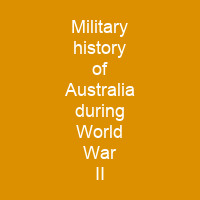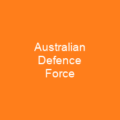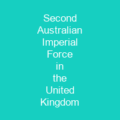Australia entered World War II on 3 September 1939. By the end of the war, almost a million Australians had served in the armed forces. Military units fought primarily in the European theatre, North African campaign, and the South West Pacific theatre. Its casualties from enemy action during the war were 27,073 killed and 23,477 wounded.
About Military history of Australia during World War II in brief

On 10 October 1939, a Short Sunderland of No.10 Squadron, based in England, became the first Commonwealth air-force to go into action when it undertook a mission to Tunisia. On 15 September 1939 Menzies announced the formation of the Imperial Force. This initially consisted of 20,000men, organised into an infantry division and auxiliary units. On 1 January 1940, Recruitment for Recruiting for Home Defence was effective and the new units were organised into infantry and auxiliary divisions. From 1942 until early 1944, Australian forces played a key role in the Pacific War. While the military was largely relegated to subsidiary fronts from mid-1944, it continued offensive operations against the Japanese until the war ended. The Australian Navy was the best-prepared of the three services, equipped with only two heavy cruisers, four light cruisers,. two sloops, five obsolete destroyers and a number of small and auxiliary warships. In 1931, the Statute of Westminster granted the Australian government independence in foreign affairs and defence. Nevertheless, Australian governments generally followed British policy towards Nazi Germany, supporting first the appeasement of Hitler and the British guarantee of Polish independence. After the British informed the Prime Minister of Australia of the declared war, the Governor-General of Australia issued a proclamation of the existence of war in Australia.
You want to know more about Military history of Australia during World War II?
This page is based on the article Military history of Australia during World War II published in Wikipedia (as of Dec. 08, 2020) and was automatically summarized using artificial intelligence.







